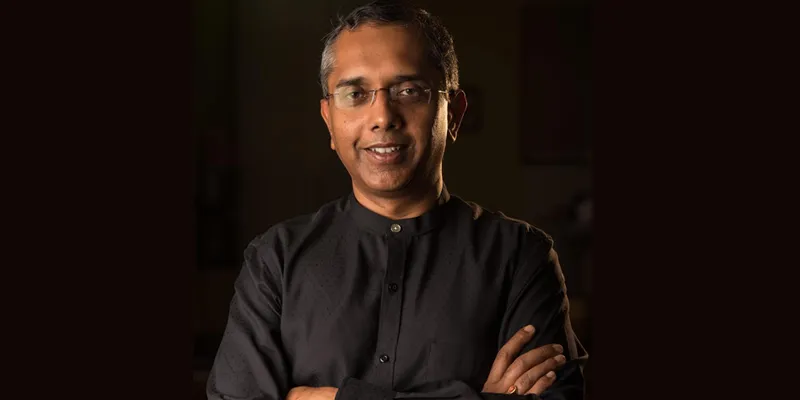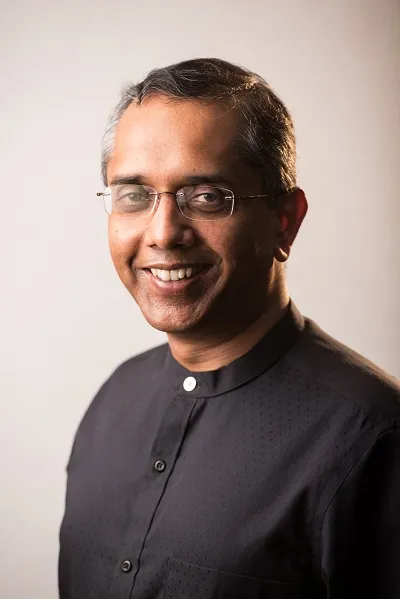Lessons from Shankar Maruwada – The ‘brand builder’ who brought Aadhaar to India’s masses
"So one day you woke up and just decided to quit," I ask.
"Yes... that was it," he replies.
In hindsight, for a newly married guy from a strictly middle-class background, it was madness. And no, his wife wasn't working either.
But it was a time when dreams were more than enough to fill one's stomach.
- Stay Hungry, Stay Foolish by Rashmi Bansal (2008)

Last week, Lok Sabha passed The Aadhaar (Targeted Delivery of Financial and Other Subsidies, Benefits and Services) Bill, 2016. The move will empower the Government of India to provide targeted services to beneficiaries by assigning them a unique 12-digit identity number, called Aadhaar, which is adding 500 – 700, 000 people to its system every day. According to Finance Minister Arun Jaitley, 97 percent of adult Indians have an Aadhaar card.
A fact worth delight is that,
In the entire world, Aadhaar was the first organisation to reach half a billion users, in less than five years (four and a half, to be precise). It wasn’t Facebook or a Silicon Valley company. It’s an initiative by our own Government
says Shankar Maruwada, ex-Head of UIDAI’s (Unique Identification Authority of India) Demand Generation and Marketing, or, in other words, the ‘brand builder’ who brought Aadhaar to India’s every nook and corner. The reach of Aadhaar is a stupendous success story in itself. In the age of the startups revolution, it’s indeed worth learning about Shankar’s journey and the lessons he has to offer to all entrepreneurs out there, both from Marketics and Aadhaar.
Starting up and failures
Shankar's journey started at the peak of the Internet boom (1999), with him co-founding Apnaguide.com, a customer reviews website (similar to the likes of Zomato and TripAdvisor). But the company shut in less than two years. The reasons, as Shankar says, were many,
For one, the model was ahead of its time. And, with not an enough audience base, there was no monetisation possibility.
For any company to thrive, it’s important to be cash-positive. And if one realises that the model isn’t working early on, it’s best to quickly revamp or fine-tune it. And that’s what Shankar did.
Second innings = new-found success with Marketics and key lessons

- Making important choices, early on – “From the beginning, we decided to not focus on the Indian market because our company’s offerings were ahead of its time for the country. Instead, we focussed on US where there was a market. Secondly, we benchmarked ourselves and billed our clients on dollars and not rupees (around $60 per hour as opposed to Indian BPO/KPO rates which were $15 per hour),” Shankar says. These decisions helped the company achieve quality growth that’s sustainable. It’s important to be choosy about the kind of work the company wants to do, clients it wants to work with and the quality of output. “We never thought of taking cheap orders”, reiterates Shankar.
- Creating own pool of talent – Marketics’ offerings were unique. They were a KPO model operating remotely, as well as providing consulting services. Employees were key to their growth. Shankar’s strategy was to create his own pool of talent, rather than taking in available ones. He says, “We trained quality youth to deliver. This ensured our attrition was very low because our employees valued what they received and were eager to succeed in it.”
- Building a defined culture – “A lot of organisations today have grown so big and so fast. But it’s only after they reach a stage they try to figure out the company culture. It’s like once I become rich, I will worry about my health. That approach is wrong,” Shankar notes. Marketics placed great emphasis on company culture from the very beginning. The organisation’s main focus was ‘client delight,’ and that remained a non-negotiable throughout, he adds. Shankar also says, “Apart from client delight nothing else mattered – the number of holidays someone took, dress code, time an employee walked in and walked out. We created a workplace where we would want to come in every day. And to do so, we have asked people to leave who may have been good otherwise but didn’t buy in to our ethos.”
- Never compromise – “Whatever path you choose, never compromise on certain things. In our case, it was ‘client delight’. So set the non-negotiables in the beginning and never look back to change them,” Shankar suggests.
- Power of focussing on customers – More and more entrepreneurs today are building a technology and then finding the use-case. Marketics worked the other way round. Shankar says, “We figured out exactly what our customers wanted and built that. We were in the business of advanced statistical modelling but clients’ wanted simple solutions. So we pushed the statistics behind and started giving them business answers from their data. It worked.”
A giant leap with Aadhaar – Designing a programme to realise over a billion dreams
Shankar was roped in by Nandan Nilekani to head UIDAI’s demand generation, communication and awareness. His responsibility was to create demand for Aadhaar in the nation, rather than force people to apply for it. The rest, as they say, is history. But Shankar shares some valuable lessons and tips on working with the Government of India –
- Understand the mindset of government officials – It’s important to appreciate what they do and not judge them from the lens of a for-profit. While they may seem slow and bureaucratic, it’s necessary to realise that the job demands them to be so. As Shankar rightly points out, “A government official has to go through a whole range of internal rules, regulations and protocols. They are accountable for that and unlike us entrepreneurs they don’t get a bonus for taking risks.”
- Keep the implementation simple – If you’re devising a solution that you expect the government to implement, keep it simple. Keep in mind India’s population, diversity and problems. From his Aadhaar experience, Shankar says, “We took the ground realities of India’s villages into account while devising the plan. Two examples – one doesn’t need Internet connectivity for enrollment of Aadhaar, as the data can be synced up later. Secondly, we gave a lot of flexibility in the choices of devices (such as computers and cameras) that one could use.”
- Keep the solution even simpler – “Aadhaar provides only thing - the person's identity - and nothing else. This allowed multiple players (government, private and non-profit) to collaborate because they had the freedom to devise strategies on how they wanted to deploy this. That, to date, remains the beauty of this solution.”
- Patience, immense patience – “We spent a lot of time explaining the Aadhaar model to the Government of India and convincing them about its potential benefits. And we waited for months for them to believe in our model and come around.”
Aadhaar, no doubt, is a game-changer. Shankar left Aadhaar in February 2012. Recently, he teamed up with the Nilekanis again and this time, they have co-founded Ek Step – a non-profit that will leverage technology to deliver primary education at scale, to about 200 million children. Another giant leap.
On a parting note, Shankar says,
The entrepreneurship landscape has changed since I started. Society is so much more favourable to entrepreneurs now and they are keen on making an impact, rather than just following a straight corporate ladder. But it’s important to enjoy the journey, think deeper and long-term. One shouldn’t jump into it to become a millionaire. Because if it’s done well, it can be a life-altering experience.







